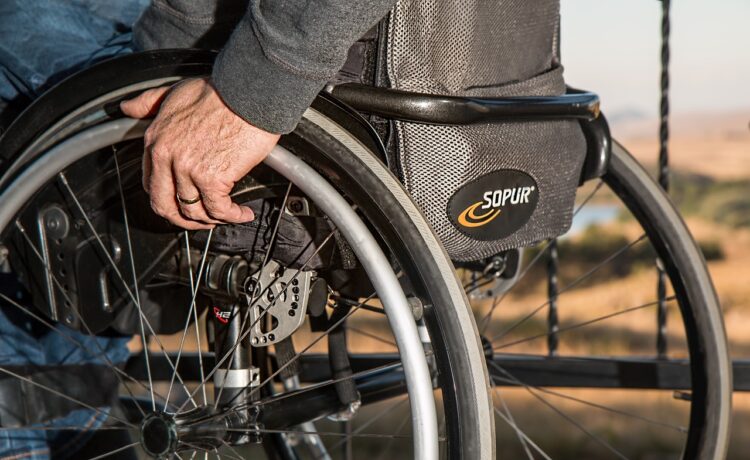Melbourne, frequently praised for its lively culture and impressive architecture, is taking important steps towards becoming a more welcoming city. Urban planners and architects are adopting creative designs to make sure people of all abilities can appreciate the city’s spaces. Highlighted is the importance of acknowledging how these changes offered by My Link Assist NDIS provider in Melbourne are not only transforming the landscape of Melbourne but also improving the well-being of individuals with disabilities.
Reimagining Access: The Foundation of Inclusive Design
The discussion regarding architectural accessibility in Melbourne has been ongoing for some time, but it has advanced from just meeting requirements to a more comprehensive and compassionate strategy. The city’s dedication to developing inclusive environments for everyone without requiring special modifications represents a major change in city planning. This comprehensive approach goes beyond just following rules and is woven into the city’s growth, showcasing a collective dedication to diversity and equality throughout the community.
Key Features of Accessible Urban Design
1. Seamless Public Transport Systems
Melbourne’s public transportation system is currently in the process of changing in order to improve accessibility. This program is a fundamental part of the city’s strategy for inclusive design and can be used as an example by cities around the globe. Trams, buses, and trains are now being fitted with lower steps and ramps to make them accessible for people of all mobility levels. Audible cues and distinct, vivid screens assist individuals with hearing or vision limitations. In contrast, designated areas for individuals in wheelchairs guarantee that travelling is not only feasible but also pleasant and respectful. These enhancements are essential for promoting the autonomy of individuals accessing disability services in Melbourne, leading to more seamless and pleasant daily journeys.
2. Inclusive Public Spaces
Melbourne is establishing a strong example by adopting an inclusive approach towards public spaces. Efforts are being made to ensure that every area, from the busy Central Business District (CBD) to the peaceful parks, is welcoming to all. Sidewalks have been expanded and made even to remove obstacles that may cause people to trip, and preference is given to creating barrier-free pathways to improve movement for individuals using strollers or wheelchairs. The usage of tactile ground surface indicators and Braille signs is becoming more widespread, helping individuals with visual impairments navigate the city autonomously and securely. These improvements demonstrate Melbourne’s dedication to building a city that is truly inclusive for all.
3. Adaptive Recreation Facilities
Recreation is available to everyone, and Melbourne’s adaptive recreational facilities exemplify this notion. In the same way, sports facilities are being planned with adaptive tools and accessible layouts, enabling all individuals to engage in and appreciate sports, no matter their physical capabilities.
4. Universal Housing
Melbourne is adopting the concept of universal design in the field of housing. Developments for new housing are more frequently integrating features to ensure living spaces are accessible and comfortable for all. This entails entrances without steps, doorways that are wider for easy access, and interiors that can be modified to meet the unique requirements of people with disabilities. These characteristics cater to residents’ current and future needs, promoting longevity and sustainability in housing solutions.
5. Accessible Cultural Venues
Melbourne’s cultural institutions are leading the way in ensuring that art, theatre, and history are accessible to everyone. Museums and art galleries are adding ramp access, tactile exhibits, and audio descriptions to make cultural offerings more accessible to individuals with disabilities. Furthermore, numerous establishments have started offering specific low-sensory days and have trained their staff on accessibility in order to create a welcoming environment for guests with sensory sensitivities. This all-encompassing method enhances the cultural experiences of those in the city receiving disability services in Melbourne and also promotes a greater understanding of diversity in the arts community.
6. Technology-Enhanced Accessibility
In Melbourne, the use of technology is crucial in improving urban access. Smart city projects involve incorporating applications that offer up-to-date data on the availability of public spaces and transportation services. Augmented reality features can assist the visually impaired in navigating cities, and AI systems are being studied to personalise navigation according to specific mobility requirements. These technological improvements are essential for enabling individuals with disabilities to move around the city more confidently and easily, strengthening Melbourne’s image as a progressive and inclusive city.
7. Inclusive Workplaces
Melbourne is experiencing an increase in workplace inclusivity, which is important for integrating people with disabilities fully into society. Contemporary office layouts include adaptable workstations, convenient bathrooms, and silent areas that meet various requirements, including those of people using disability services in Melbourne. Employers are more and more implementing policies that back flexible working hours and remote work setups, to meet the needs of various disabilities.
Challenges and Opportunities
Even though there has been noticeable progress, there are still existing challenges. Incorporating accessibility features encounters obstacles, ranging from financial restrictions to regulatory intricacies. Nevertheless, these obstacles also offer chances for creativity and teamwork within the community. It is crucial to involve disability advocates and individuals with personal experiences in the planning process to ensure that outcomes effectively address user needs.
Collaborative Efforts Yielding Positive Change
Collaboration among government bodies, architects, and Disability Services in Melbourne is the main driving force behind the shift towards inclusive design in the city. This collaborative method guarantees the implementation of practical solutions that address the actual needs of individuals with disabilities.
For example, the Victorian Government’s dedication to enhancing accessibility in state-owned structures establishes a standard for private organisations to emulate. Additionally, local disability services in Melbourne’s advocacy have played a crucial role in drawing attention to particular needs that could be missed otherwise.
Looking Ahead
With Melbourne’s continued growth, the need for inclusive design becomes increasingly important. Ongoing advancements in technology and materials are paving the way for even more innovative solutions in the promising future of architectural accessibility.
Ultimately, as a top disability service in Melbourne, we understand that the journey to complete inclusivity is lengthy. Still, the current actions are starting to change our city into a fairer, more accessible community. Every advancement in architectural design not only improves usefulness but also enhances the quality of life for all residents of Melbourne, demonstrating that inclusive design offered by My Link Assist benefits everyone.













